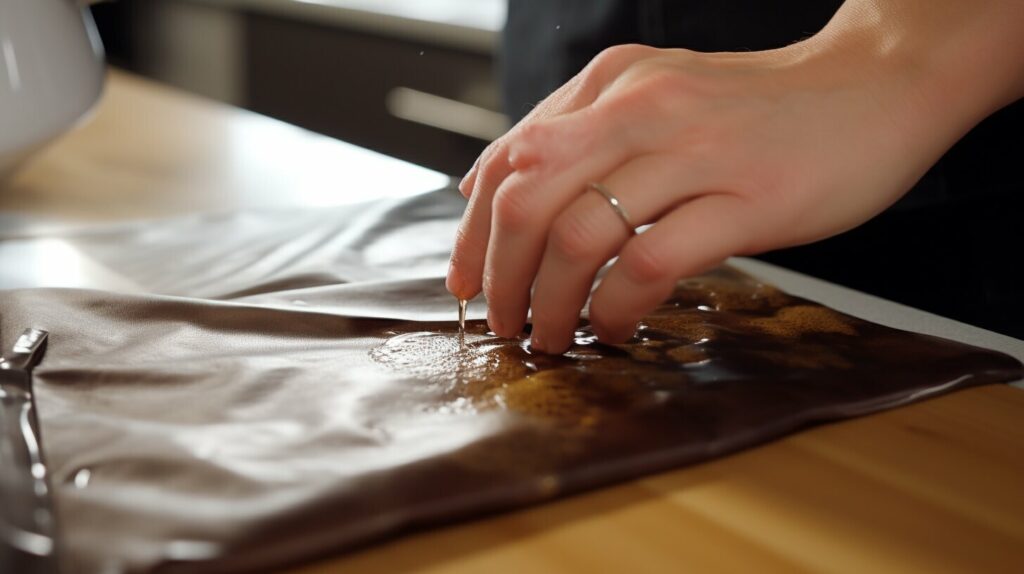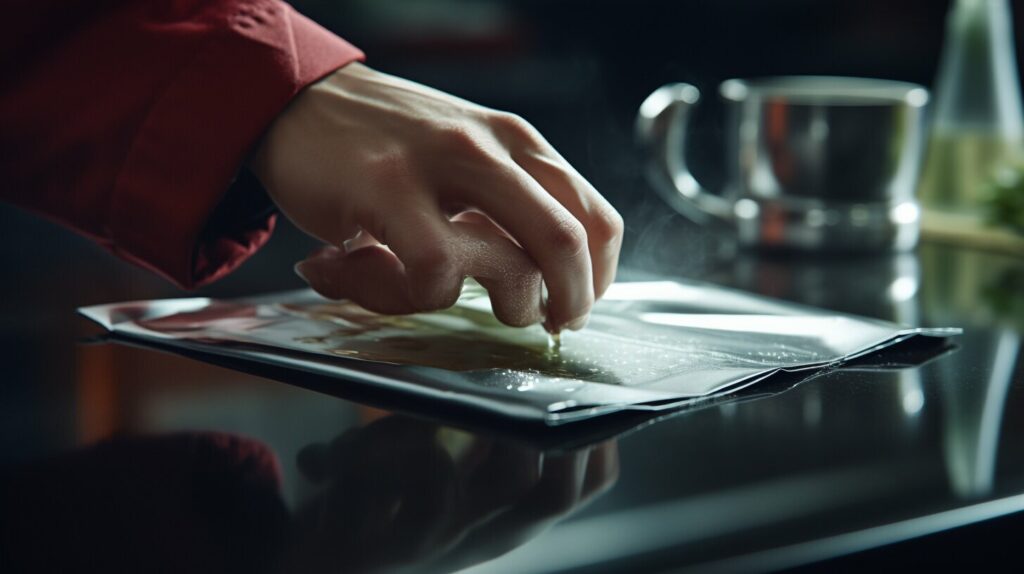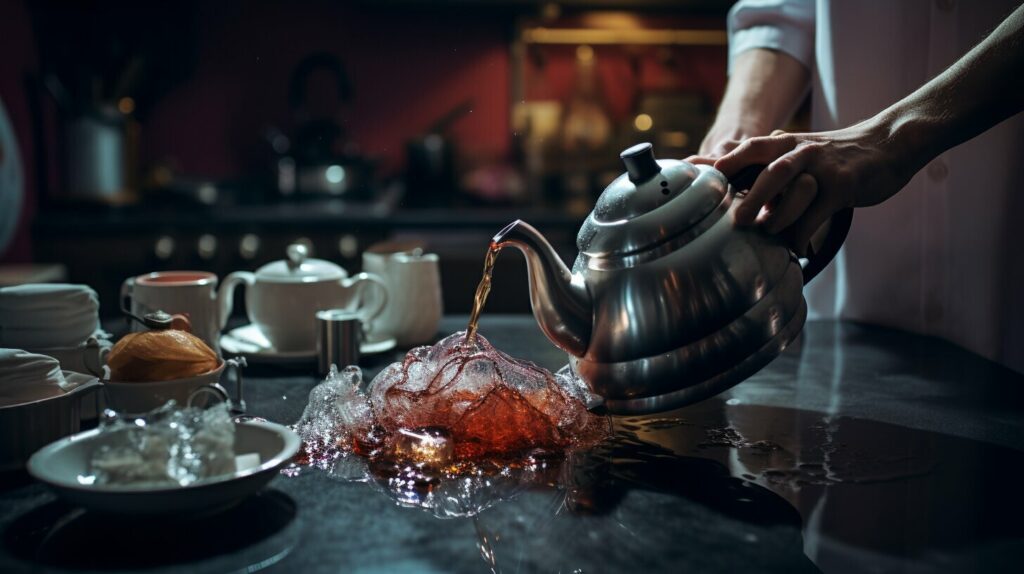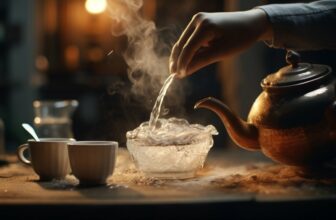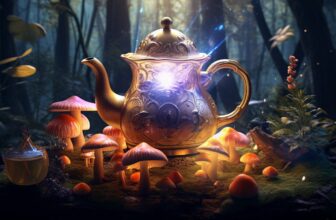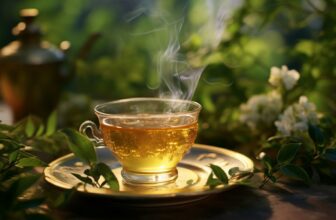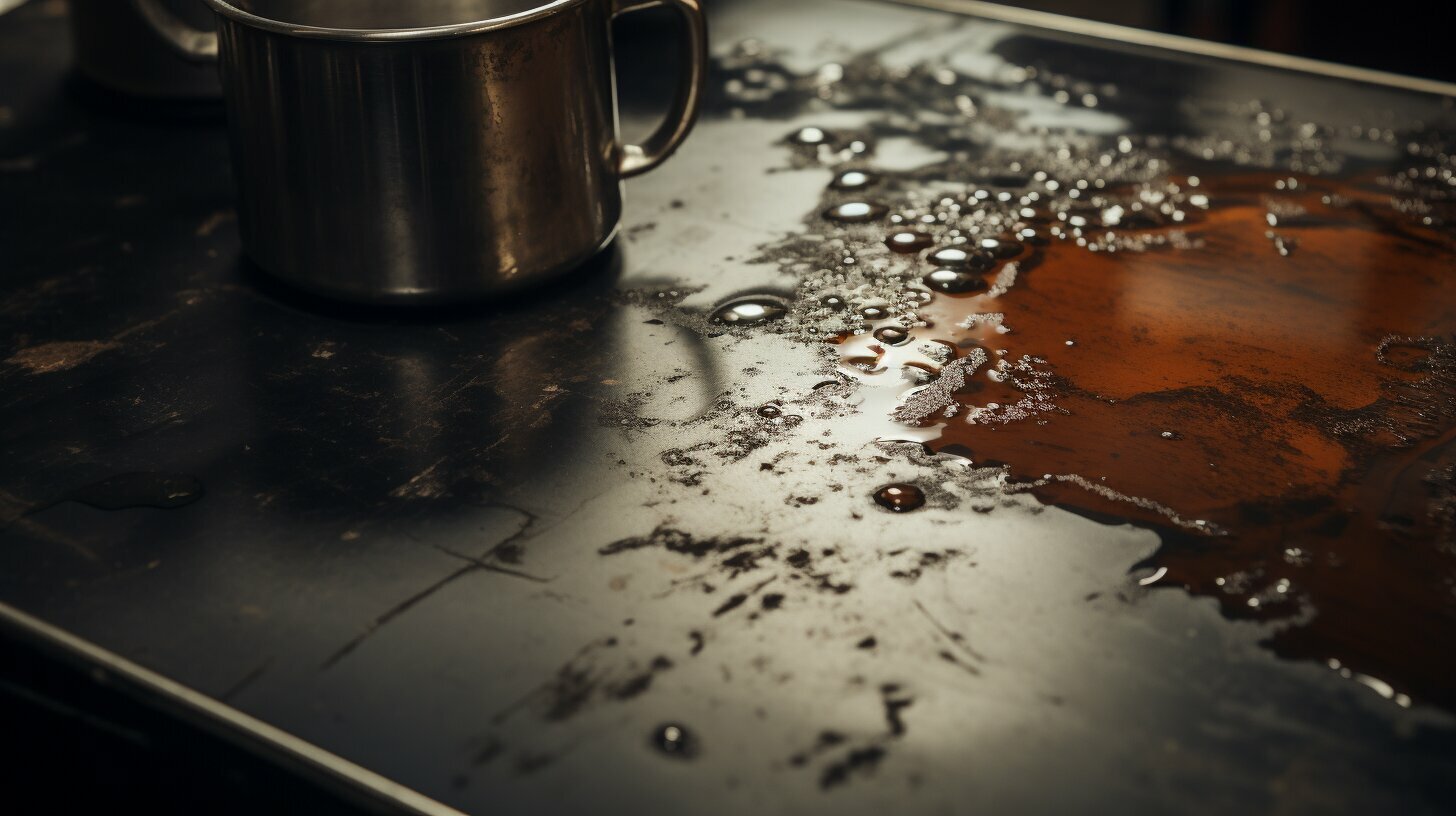
Are you tired of the stubborn tea stains on your stainless steel items? Don’t worry, I’ve got you covered with this quick guide on how to remove tea stains effortlessly.
To remove tea stains from stainless steel, there are several methods you can try. These include using baking soda, cornstarch and vinegar paste, detergent and lemon, salt, or lemon alone. It’s important to avoid using harsh cleaning products that can corrode the stainless steel. Tea stains are caused by tannins and can be difficult to remove, so it’s best to clean your stainless steel mug or utensils as soon as possible. Preventing tea stains on stainless steel can be done by rinsing the mug with hot water after each use and cleaning it regularly.
Key Takeaways:
- Remove tea stains from stainless steel using baking soda, cornstarch and vinegar paste, detergent and lemon, salt, or lemon alone.
- Avoid using harsh cleaning products that can damage the stainless steel surface.
- Tea stains are caused by tannins and should be cleaned as soon as possible.
- Prevent tea stains by rinsing the stainless steel item with hot water after each use and cleaning it regularly.
With these tips, you can easily keep your stainless steel items free from tea stains and maintain their pristine appearance. Enjoy your tea without worrying about unsightly stains!
Effective Methods for Removing Tea Stains from Stainless Steel
Let’s explore a few tried-and-tested methods that will help you say goodbye to those pesky tea stains on your stainless steel items. Tea stains can be stubborn, but with the right cleaning techniques, you can restore the shine to your stainless steel.
One method is to create a paste with baking soda and water. Apply the paste onto the stained area, gently scrubbing with a soft cloth or sponge. Rinse thoroughly with warm water and pat dry. Baking soda is a natural abrasive that can help lift the tea stains from the stainless steel surface.
Another effective method involves using a mixture of cornstarch and vinegar. Create a paste by combining equal parts cornstarch and white vinegar. Apply the paste onto the stained area, allowing it to sit for a few minutes. Then, gently scrub the area using a soft cloth or sponge. Rinse well and dry with a clean cloth.
If you don’t have baking soda or cornstarch on hand, you can also try using dish detergent and lemon juice. Mix a few drops of detergent with lemon juice to create a cleaning solution. Apply the solution to the stained area, scrub gently, and rinse thoroughly. Lemon juice acts as a natural acid that can help remove tea stains.
| Method | Ingredients | Process |
|---|---|---|
| Baking Soda Paste | Baking soda, water | Create a paste, apply, scrub, rinse, dry |
| Cornstarch and Vinegar Paste | Cornstarch, white vinegar | Create a paste, apply, let sit, scrub, rinse, dry |
| Detergent and Lemon Solution | Dish detergent, lemon juice | Mix ingredients, apply, scrub, rinse |
These are just a few examples of the methods you can use to remove tea stains from stainless steel. Remember to always test a small, inconspicuous area first before applying any cleaning solution to the entire surface. With regular cleaning and proper maintenance, you can keep your stainless steel items looking shiny and tea stain-free.
Safe and Natural Cleaning Solutions for Stainless Steel
When it comes to cleaning stainless steel, it’s important to use gentle and natural solutions that won’t harm the surface or compromise its shine. Harsh chemicals can cause damage and leave unsightly marks on your stainless steel items. Fortunately, there are safe and effective ways to remove tea stains from stainless steel without resorting to harmful cleaning agents.
One method you can try is creating a paste using baking soda and water. Simply mix the two ingredients together until you have a thick consistency. Apply the paste to the tea-stained area and gently rub it in a circular motion with a soft cloth. Rinse with warm water and dry with a clean towel. Baking soda works as a gentle abrasive that can help lift stubborn stains without scratching the surface of the stainless steel.
Another natural solution involves using a mixture of cornstarch and vinegar. Make a paste by combining equal parts cornstarch and white vinegar. Apply the paste to the stained area and let it sit for a few minutes. Wipe away the paste with a damp cloth and rinse with warm water. Vinegar is known for its cleaning properties, while cornstarch helps absorb the tea stains, leaving your stainless steel looking clean and shiny.
If you prefer a citrus-scented cleaning solution, you can use a mixture of detergent and lemon. Squeeze the juice of a lemon into a small bowl and add a few drops of dish detergent. Mix well and apply the solution to the stained area. Let it sit for a few minutes before wiping it away with a cloth. Lemon contains natural acids that can help break down the tea stains, while the detergent helps remove any grease or grime.
Remember, prevention is key when it comes to keeping your stainless steel free from tea stains. Rinse your stainless steel mug with hot water after each use to remove any residual tannins. Regularly clean your stainless steel items with mild soap and warm water to maintain their appearance. By following these safe and natural cleaning methods, you can easily remove tea stains from stainless steel and keep your items looking their best.
| Cleaning Solution | Ingredients |
|---|---|
| Baking Soda Paste | Baking soda, water |
| Cornstarch and Vinegar Paste | Cornstarch, white vinegar |
| Detergent and Lemon Solution | Lemon juice, dish detergent |
- Use a baking soda paste made by combining baking soda and water to gently scrub away stubborn tea stains.
- Create a mixture of cornstarch and vinegar to form a paste that can help absorb and remove tea stains from stainless steel.
- Try a solution of lemon juice and dish detergent to break down tea stains and leave your stainless steel looking clean and fresh.
“When it comes to cleaning stainless steel, it’s important to use gentle and natural solutions that won’t harm the surface or compromise its shine.”
Preventing Tea Stains on Stainless Steel
To keep your stainless steel items looking pristine, it’s essential to adopt some preventive measures that will minimize the chances of tea stains forming. Tea stains are not only unsightly but also difficult to remove, so taking proactive steps is key to maintaining the appearance of your stainless steel mugs, utensils, or appliances.
One simple preventive method is to rinse your stainless steel items with hot water after each use. This helps to remove any residual tea and prevents it from drying and leaving stains on the surface. Additionally, regularly cleaning your stainless steel with a mild detergent or soap can help remove any tea residue that may have accumulated over time.
Another effective way to prevent tea stains is to avoid leaving tea in stainless steel containers for extended periods. When tea is left to sit for too long, its tannins can react with the metal and cause stains. Instead, make it a habit to empty and clean your stainless steel mug or teapot after each use.
Additionally, using a protective coating on your stainless steel can help prevent tea stains. Applying a thin layer of mineral oil or cooking oil to the surface can create a barrier that makes it harder for tea stains to adhere. Simply wipe the oil onto the stainless steel with a soft cloth and let it sit for a few minutes before wiping off any excess.
By following these preventive measures, you can keep your stainless steel items free from tea stains and maintain their sleek and shiny appearance for years to come.
Conclusion
By following these simple tips and methods, you can easily remove tea stains from your stainless steel items and enjoy their gleaming, stain-free appearance for years to come.
To remove tea stains from stainless steel, you can try using baking soda, cornstarch and vinegar paste, detergent and lemon, salt, or lemon alone. These natural cleaning solutions are effective in tackling stubborn tea stains without causing any damage to the stainless steel surface.
Tea stains are caused by tannins and can be difficult to remove, so it’s important to clean your stainless steel mug or utensils as soon as possible. Avoid using harsh cleaning products that can corrode the stainless steel. Instead, rinse the mug with hot water after each use and clean it regularly to prevent tea stains from forming.
With proper maintenance and cleaning techniques, you can keep your stainless steel items looking their best. So go ahead, enjoy your tea without worrying about the stains, and let the natural cleaning power of these methods restore the lustrous shine of your stainless steel possessions.
FAQ
Q: Can I use baking soda to remove tea stains from stainless steel?
A: Yes, you can create a paste using baking soda and water and gently scrub the tea stains with a soft cloth or sponge. Rinse thoroughly afterward.
Q: How do I remove tea stains using vinegar?
A: You can mix vinegar and water to create a cleaning solution. Apply the solution to the tea stains and scrub gently with a cloth or sponge. Rinse well.
Q: Is lemon effective in removing tea stains from stainless steel?
A: Yes, lemon can be used alone or with a mild detergent. Simply rub the lemon directly on the tea stains or mix lemon juice with water and scrub gently. Rinse thoroughly.
Q: Can I use salt to remove tea stains from stainless steel?
A: Yes, you can sprinkle salt on a damp cloth and gently scrub the tea stains. Rinse well afterward.
Q: How can I prevent tea stains on stainless steel?
A: Rinse your stainless steel mug with hot water after each use and clean it regularly using mild detergent and a soft cloth. This will help prevent tea stains from forming.
